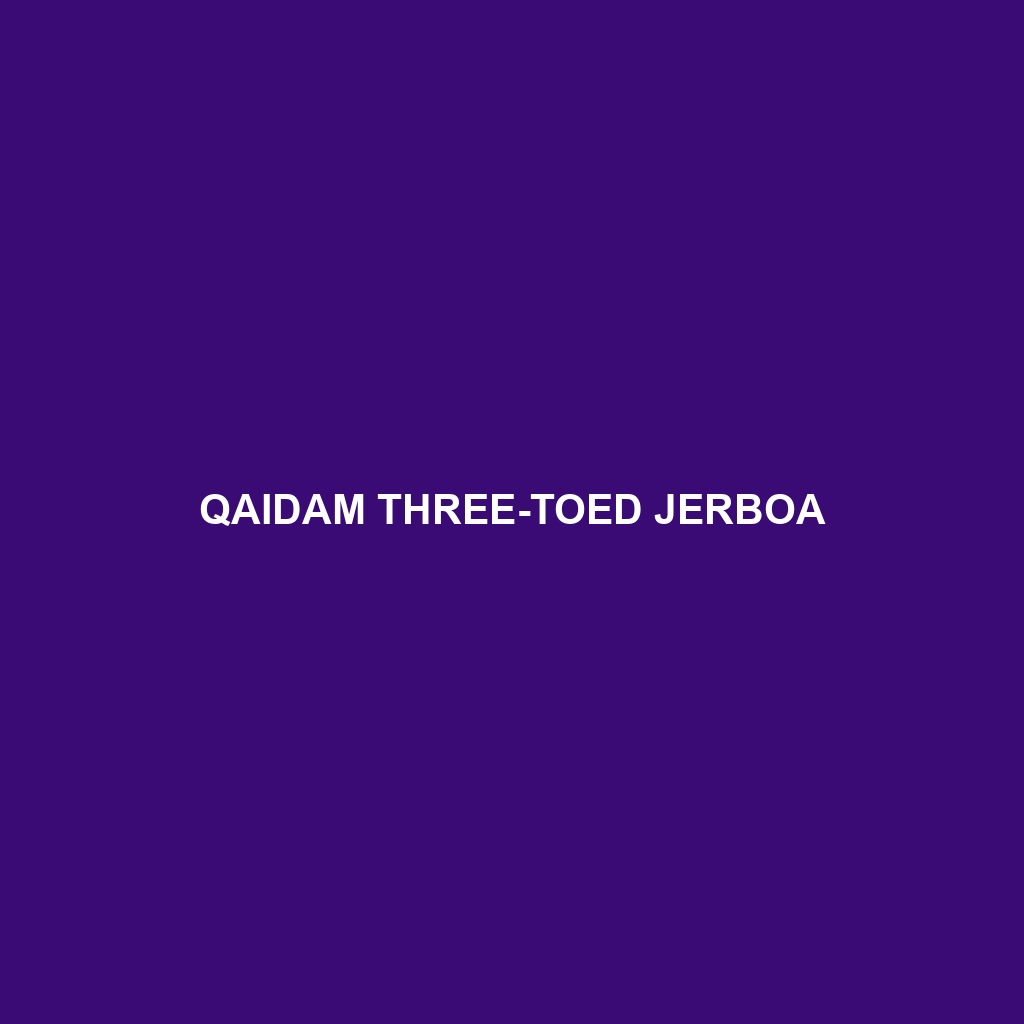Qaidam Three-toed Jerboa: A Unique Rodent of the Asian Desert
Common Name: Qaidam Three-toed Jerboa
Scientific Name:
Habitat
The Qaidam Three-toed Jerboa is primarily found in the arid regions of the Qaidam Basin in northwestern China. This unique rodent thrives in desert habitats characterized by sparse vegetation and sandy soils, exhibiting remarkable adaptability to extreme climates. It is typically located in salt flats, grasslands, and shrublands, where temperatures can vary dramatically between day and night.
Physical Characteristics
This small mammal measures approximately 15 to 20 centimeters in length, with a long, tufted tail that can be as long as its body, aiding in balance while hopping. Its fur is sandy brown with pale undersides, providing excellent camouflage against its desert surroundings. The most distinctive feature of the Qaidam Three-toed Jerboa is its elongated hind limbs, specially adapted for jumping, allowing it to escape predators quickly.
Behavior
The Qaidam Three-toed Jerboa exhibits primarily nocturnal behavior, foraging at night to avoid the scorching daytime heat. It is known for its incredible leaping ability, covering distances up to three meters in a single bound. Socially, these jerboas are solitary creatures, except during mating season, and they communicate through a series of vocalizations and scent markings to establish territory.
Diet
This species mainly feeds on plant material, particularly seeds, leaves, and roots, which are abundant in its desert habitat. The Qaidam Three-toed Jerboa has developed a specialized diet that allows it to thrive in harsh conditions, obtaining most of its water needs from its food. Its feeding habits play a crucial role in seed dispersal within its ecosystem.
Reproduction
The reproductive habits of the Qaidam Three-toed Jerboa peak during the warmer months, typically between June and August. Females give birth to litters consisting of two to five offspring after a gestation period of around 25 days. The young are weaned within a few weeks and start to emerge from their burrows shortly afterward, adapting to desert life with impressive speed.
Conservation Status
Currently, the Qaidam Three-toed Jerboa is classified as vulnerable by the International Union for Conservation of Nature (IUCN). Its habitat is under threat from agricultural expansion, climate change, and increasing human activities. Conservation efforts are vital to preserve this unique species and its fragile ecosystem.
Interesting Facts
The Qaidam Three-toed Jerboa is often referred to as a “living fossil” due to its evolutionary adaptations that have remained relatively unchanged for millions of years. Additionally, it possesses the ability to leap far greater distances than its body length, making it one of the most agile small mammals in its habitat.
Role in Ecosystem
This species plays an essential role in its ecosystem as a seed disperser, contributing to the plant community’s health and diversity. By feeding on various seeds and roots, the Qaidam Three-toed Jerboa aids in the propagation of desert flora, which in turn supports the broader range of wildlife in the region.
